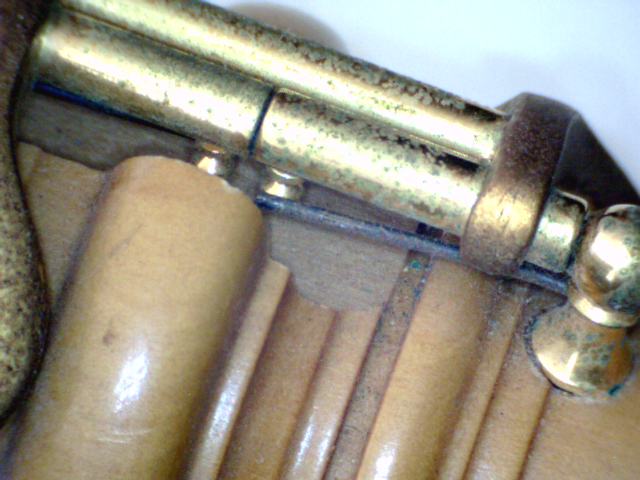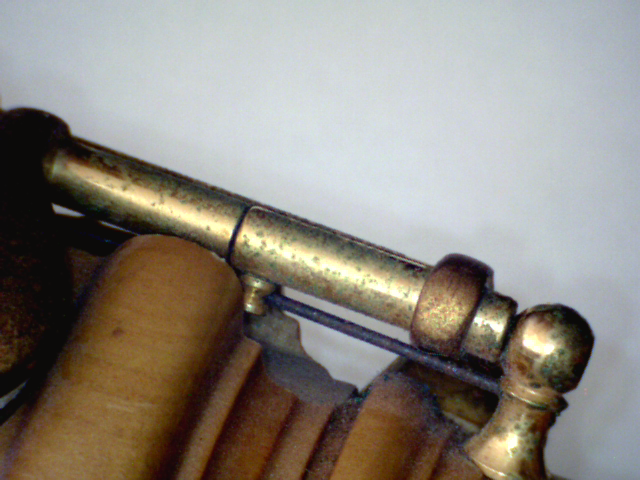Dealing with a Misplaced Needle Spring.
Right hand spring unhooked.

(Left hand spring in correct position.)
The foot joint above belongs to an older model Moeck Rottenburgh tenor. It has two keys that rely on 'needle' springs for their return action. (Nowadays they are often spring wire, usually steel, but really high class instruments can have a gold alloy. Blued steel needles are still available. It is the material I prefer but one has to be very careful to avoid the sharp points.)
The right hand spring ought to be lodged behind the lug, in the groove. The left hand one is, but it is hardly visible. Unhooked springs can usually be pushed under and back behind the lug with a small screw driver, tooth pick, cocktail stick or something similar. (A tool made for dealing with telescoping watch strap bars is ideal.)
The next picture shows it in the correct position.

How these springs get out of place can be a mystery but it is usually the result of a cleaning cloth getting snagged on the free end of the spring which is then accidentally dragged out of position. (Most springs are far more exposed than these.) In really bad cases the keys must be removed and the spring straightened or replaced. (Push a plain axle out towards the top of the instrument.) This is a more complicated procedure and may well be best done by a technician.
Most of the 'broken springs' that I have to deal with are actually only unhooked.
Poking a spring back is a good DIY proposition.